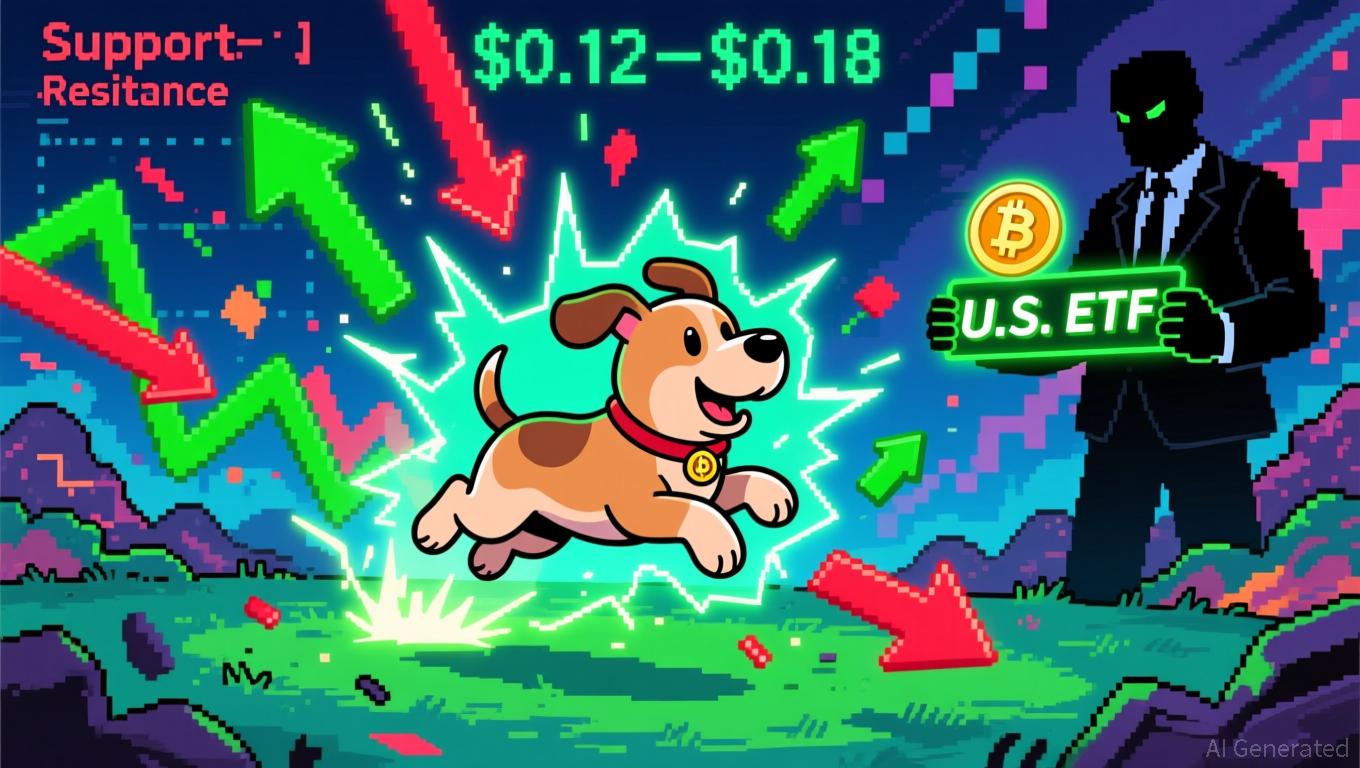Astar 2.0: Transforming Blockchain Scalability and Pioneering DeFi Advancements
- Astar 2.0 tackles blockchain scalability via ZK Rollups, zkEVM, and LayerZero interoperability, enabling cross-chain liquidity and Ethereum compatibility. - Hybrid AMM-CEX models reduce slippage while AI-powered security attracts institutions, with TVL reaching $1.4B and 20% QoQ institutional wallet growth. - Tokenomics 3.0 caps ASTR supply at 10.5B tokens, paired with Burndrop PoC to create scarcity, while governance shifts to community councils by mid-2026. - Startale App (2026) and Polkadot Plaza inte
Blockchain Scalability: Astar's Layer 2 and Interoperability Approach
Scalability continues to be a major barrier to widespread blockchain use. Astar 2.0 addresses this by utilizing zero-knowledge rollups (ZK Rollups) and EVM-compatible zkEVM, which process transactions off-chain and use cryptographic proofs for on-chain verification on

Additionally, Astar incorporates LayerZero, a protocol for cross-chain communication that links it with Ethereum,
Astar's development plans also feature Coretime on Polkadot, which improves resource management by letting users bid for block space, and Async Backing, which boosts transaction finality by separating parachain availability from execution. These advancements,
DeFi Innovation: Hybrid Approaches and Institutional Integration
Astar 2.0 takes a different path from standard automated market makers (AMMs) by launching hybrid AMM-CEX models. These systems merge the deep liquidity of centralized exchanges with the openness of decentralized platforms, minimizing slippage and enhancing the trading experience.
Security is a key strength for Astar. The platform uses AI-driven auditing solutions that address 89% of vulnerabilities in DeFi contracts, which is crucial for attracting institutional investors.
Astar's Tokenomics 3.0 is also tailored for institutional needs by setting a maximum
Looking Ahead: Governance and Ecosystem Growth
Astar's ambitions go beyond technology, focusing on governance and user accessibility.
Governance is also set for transformation. By mid-2026, Astar intends to shift from Foundation-led management to community councils, bringing in external specialists and active contributors.
Summary: Astar 2.0 as a Forward-Looking Investment
Astar 2.0’s emphasis on both scalability and DeFi advancement establishes it as a significant contender in the blockchain space. Its technical framework—featuring ZK Rollups, interoperability, and high-level security—addresses major industry challenges. At the same time, its economic structure, including Tokenomics 3.0 and hybrid DeFi solutions, appeals to a wide range of users from individuals to institutions. As Astar moves toward its Evolution Phase 2 and the introduction of the Startale App, stakeholders should watch closely to see how it delivers on these ambitious plans. In a landscape where blockchain’s value depends on scalability and reliability, Astar 2.0 stands out as a promising model for the future.
Disclaimer: The content of this article solely reflects the author's opinion and does not represent the platform in any capacity. This article is not intended to serve as a reference for making investment decisions.
You may also like
Enlivex Integrates Biotechnology and Blockchain for a Treasury Transformation
- Enlivex Therapeutics raised $212 million to adopt RAIN tokens as its primary treasury asset, becoming the first U.S. public company to use blockchain-based prediction markets. - The investment includes USDT and USD, with RAIN's deflationary design aiming to stabilize value while enabling real-world event trading via AI oracles. - Enlivex's stock surged 85% post-announcement, aligning with growing institutional interest in prediction markets led by firms like Polymarket and Kalshi. - The move faces crypto

Bitcoin Updates: Metaplanet Utilizes Bitcoin-Backed Loan to Expand Portfolio Despite 20% Unrealized Loss
- Tokyo-listed Metaplanet secured a $130M Bitcoin-backed loan to expand BTC holdings despite a 20% unrealized loss on its 30,823 BTC reserves. - The firm maintains "sufficient collateral headroom" amid Bitcoin's $87,000 price, below its $108K average purchase cost, using floating-rate debt and equity financing. - Its hybrid funding model—$500M credit facility plus $5B capital injections—reflects broader industry reliance on crypto-collateralized borrowing amid tightening credit and falling stock prices. -

USDe's total value locked drops by 50% even as onchain activity remains strong, highlighting the vulnerability of DeFi yields
- Ethena's USDe stablecoin TVL fell 50% to $7.6B amid yield compression and unwinding leveraged carry trades, despite rising onchain transaction volume. - The synthetic stablecoin's 5.1% APY now lags Aave's 5.4% USDC borrowing rates, triggering outflows as leverage strategies become unprofitable. - Collapsing 10x leverage loops and maturing perpetual tokens accelerated TVL decline, exposing fragility of yield-bearing stablecoins in risk-off markets. - Chaos Labs recommends lowering Aave V3 stablecoin borro